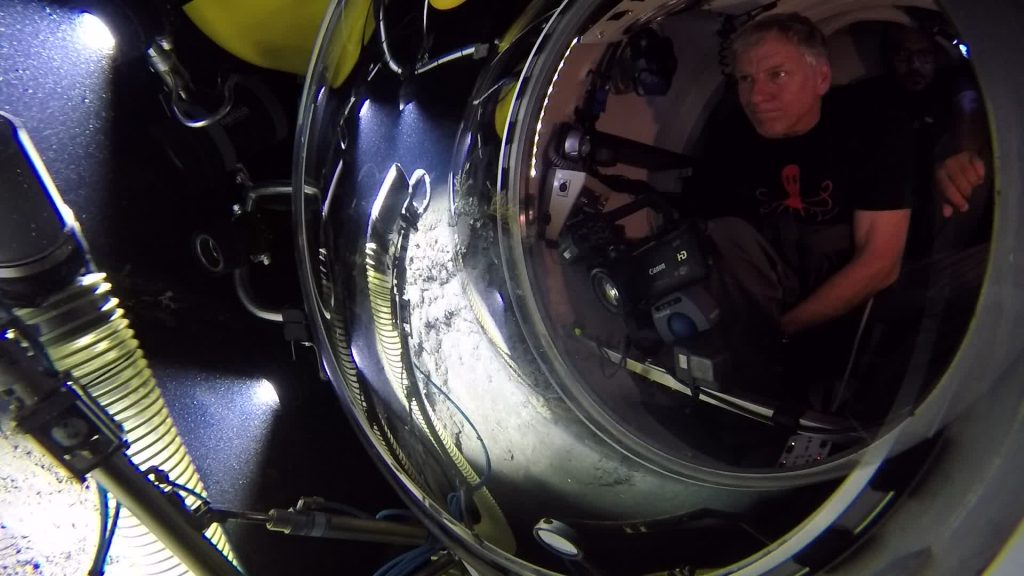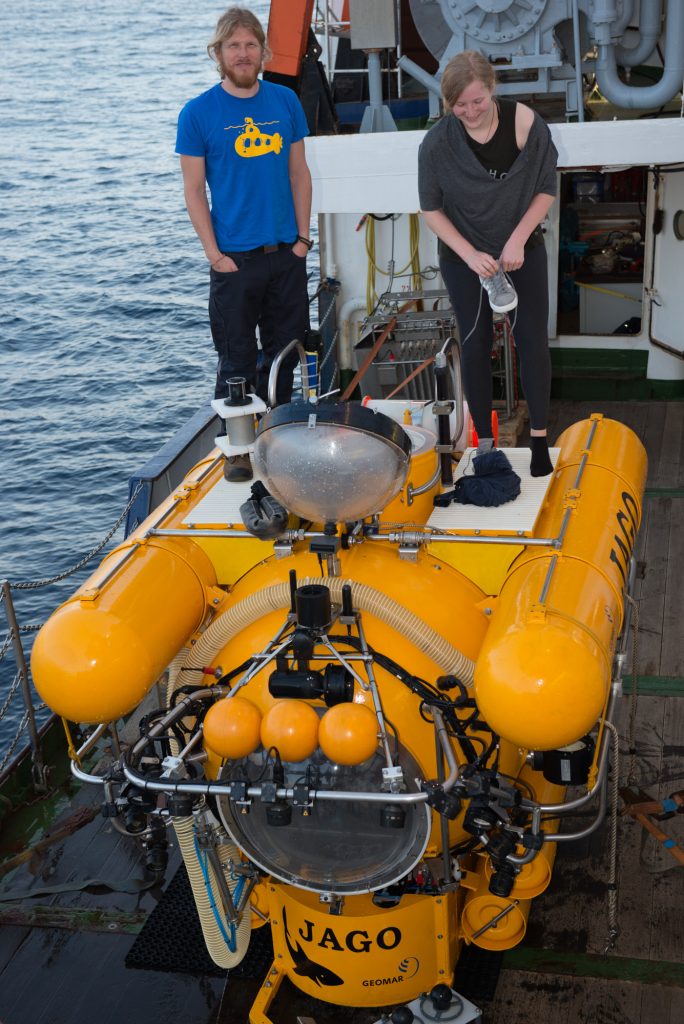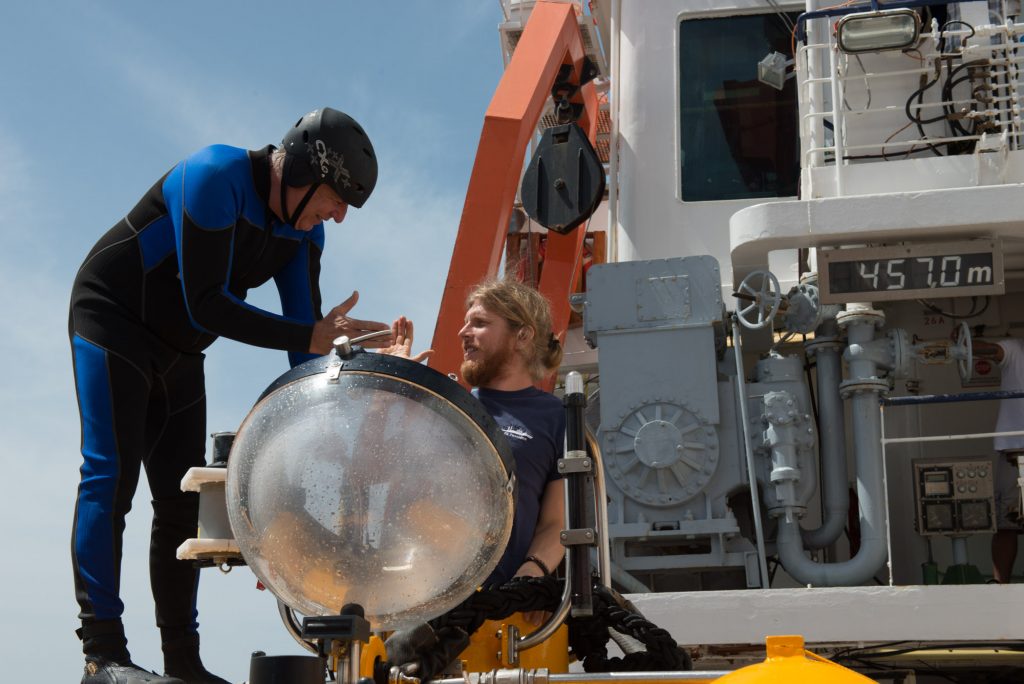english version below
…braucht Zeit und die richtigen Bedingungen!
Hier erzählt JAGO-Pilot Peter Striewski von seinem Weg ins „JAGO-Cockpit“
Wer den eng getakteten Forschungsbetrieb auf Ausfahrten mit einem Forschungsschiff kennt, weiß, dass es gar nicht so einfach ist, Zeit zum Üben eines reibungslosen Einsatzes von mitgebrachten Geräten und – wie in unserem Fall – Fahrzeugen zu finden. Und das dann noch unter geeigneten, sprich ruhigen Seebedingungen.
Seit bereits vier Jahren im Tauchboot-JAGO-Team mit Karen und Jürgen, war es zwar kein Problem für uns, jede Menge Übungstauchgänge im Kieler Marine-Arsenal unter „Schwimmbad“-Bedingungen zu machen. Und auch den einen oder andere Trainingstauchgang auf unterschiedlichen Ausfahrten zusammen mit Jürgen als Copilot im Tauchboot habe ich absolviert. Doch was für mich bisher fehlte, waren die richtigen Bedingungen und die Zeit, ohne Druck Erfahrungen als alleiniger Pilot im Tauchboot während eines wissenschaftlichen Einsatzes zu sammeln.

Im Windschatten der hohen Vulkaninseln der Kapverden tauchen wir mit JAGO hauptsächlich im Freiwasser, also in der Wassersäule. Die Bedingungen, als alleiniger Pilot meine Tauchpraxis zu vertiefen, sind hier optimal. Die oft großen Herausforderungen wie Strömung, anspruchsvolle Topografie und das Anfahren bestimmter Ziele fallen einfach weg. Ziel ist es, die Lebewesen im Freiwasser zu dokumentieren und zu sammeln. Das Tauchboot driftet mit der Strömung in der Wassersäule. Im Tauchboot interessiert es uns daher gar nicht so richtig, wo man eigentlich hin treibt und die Poseidon kommt schon hinterher. Und Hindernisse gibt es auch keine 😉
Nur auf die Tiefe muss man recht genau achten – anstatt 400m tief dürfen wir im Freiwasser nur 350m tauchen. Aber mit Bedacht und Ruhe ist das Halten der Tiefe im Freiwasser unproblematisch. Karen am Unterwassertelefon auf POSEIDON fragt von der Oberfläche häufig genug nach, wie tief wir gerade unterwegs sind.
Auf Grund der guten Bedingungen und der von Henk-Jan zur Verfügung gestellten Zeit konnte ich so erste Erfahrungen als Pilot mit Wissenschaftlern im Tauchboot sammeln und die verrückten Lebewesen des Freiwassers mit eigenen Augen bewundern.
Vielen Dank für die Geduld meiner Mitfahrer und vor allem ein ganz großen Dank an Jürgen und Karen für ihr Vertrauen!

[english]
To become a JAGO pilot …
… needs time and the right conditions
Here JAGO pilot Peter Striewski writes about how to get in charge of the “JAGO cockpit”
Anyone familiar with the usually very tight program of research cruises knows that it is not so easy to find extra time to practice the use of special equipment or – as in our case – vehicles brought on board a research vessel. And – on top – to find calm sea conditions for it.
During my four years as part of the submersible JAGO team with Karen and Jürgen, it was not a problem for us to do a lot of training dives in the Navy arsenal in Kiel under “swimming pool” conditions. And also to complete some training dives during several cruises together with Jürgen as co-pilot in the submersible. But what was so far missing for me were the right time and conditions to get practice without the pressure as the sole pilot in the submersible during a scientific mission.
On the lee side of the high volcanic islands of Cape Verde we dive with JAGO mainly in open water in the water column. The conditions for deepening my practice as JAGO pilot are very good here. Big challenges like currents and rugged topography are not present and we do not have to approach certain targets. The goal of our dives is to document and collect the creatures in the open water. The submersible drifts with the current in the water column. Under these conditions it does not really matters to where we are drifting and Poseidon will follow us anyway. And there are no obstacles like rocks in the water column (-;
I only have to pay attention for the depth – instead of 400m we can only dive to 350m in open water. But with the necessary care it is no problem to keep a stable depth, and Karen at the underwater telephone on board of POSEIDON asks often enough for our actual depth.
Due to the good conditions and the time provided by Henk-Jan, I was able to gain my first experiences as a pilot with scientists in the submersible and to look at the incredible creatures of the open water with my own eyes.
Many thanks to my passengers for their patience and especially a big thank-you to Jürgen and Karen for their trust!
